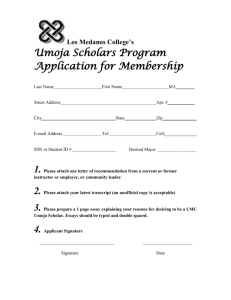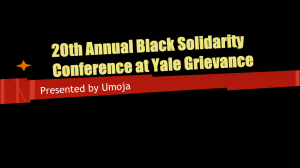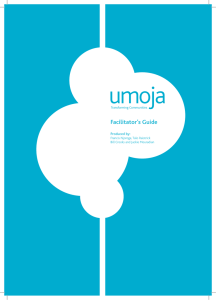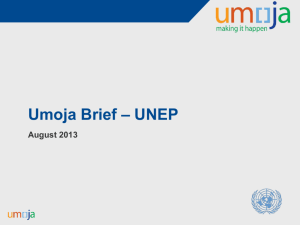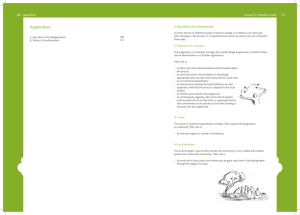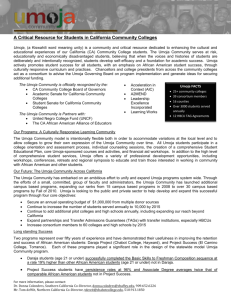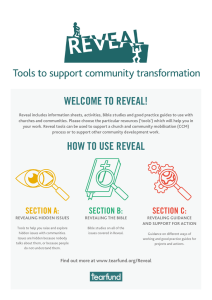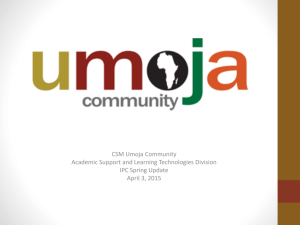Reveal A brief description
advertisement
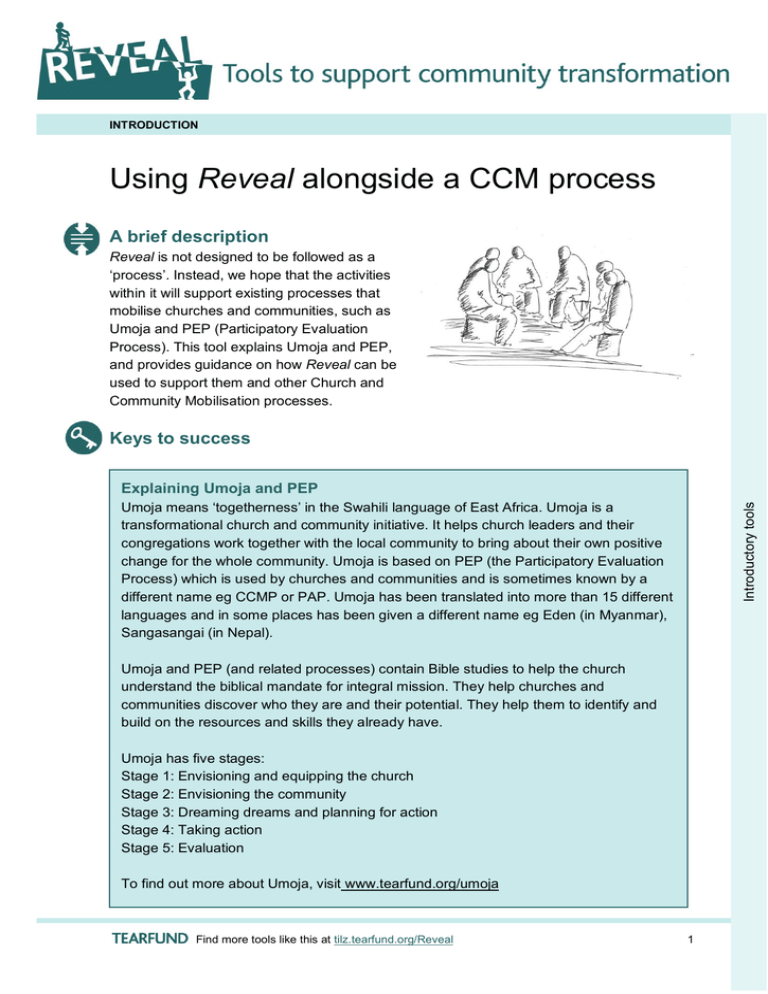
INTRODUCTION Using Reveal alongside a CCM process A brief description Reveal is not designed to be followed as a ‘process’. Instead, we hope that the activities within it will support existing processes that mobilise churches and communities, such as Umoja and PEP (Participatory Evaluation Process). This tool explains Umoja and PEP, and provides guidance on how Reveal can be used to support them and other Church and Community Mobilisation processes. Keys to success Explaining Umoja and PEP Introductory tools Umoja means ‘togetherness’ in the Swahili language of East Africa. Umoja is a transformational church and community initiative. It helps church leaders and their congregations work together with the local community to bring about their own positive change for the whole community. Umoja is based on PEP (the Participatory Evaluation Process) which is used by churches and communities and is sometimes known by a different name eg CCMP or PAP. Umoja has been translated into more than 15 different languages and in some places has been given a different name eg Eden (in Myanmar), Sangasangai (in Nepal). Umoja and PEP (and related processes) contain Bible studies to help the church understand the biblical mandate for integral mission. They help churches and communities discover who they are and their potential. They help them to identify and build on the resources and skills they already have. Umoja has five stages: Stage 1: Envisioning and equipping the church Stage 2: Envisioning the community Stage 3: Dreaming dreams and planning for action Stage 4: Taking action Stage 5: Evaluation To find out more about Umoja, visit www.tearfund.org/umoja Find more tools like this at tilz.tearfund.org/Reveal 1 INTRODUCTION USING REVEAL TO SUPPORT CCM Using Reveal to support Umoja, PEP or another CCM process Section A – Reveal: hidden issues The activities in Section A are designed to reveal ‘hidden’ issues. We recommend that all Umoja and PEP facilitators read the tools in Section A1. These describe some of the issues that may be hidden within a community and explain why it is important to address them. You can then choose which activities you feel are most appropriate, given the issues that may need uncovering within the community. The activities in Section A2 are design to help reveal hidden issues. They can be used at any stage of the mobilisation process. For example, if a facilitator (or indeed somebody else taking part in the process) felt that there were hidden issues that needed addressing within the church, then some of the activities could be used at the beginning of the process (Umoja – Stage 1: Envisioning and equipping the church; and PEP – Awakening the church). Introductory tools The activities in Section A2 may also be particularly useful during the stages of CCM that involve gathering and analysing information from the community (Umoja – Stage 2: Envisioning the community; PEP – Church and community description, Information gathering and analysis). During these stages, you may want to use the activities in Reveal, alongside the activities in Umoja and PEP, to help a church and community think about potential hidden issues in addition to more obvious problems that people are happy to talk about. Please see Introductory tool: Data gathering and analysis tools for a list of such tools that can be found in other Tearfund resources. It may also be the case that hidden issues need uncovering at the later stages of the mobilisation process when planning and action take place (Umoja – Stage 3: Dreaming dreams and planning for action and Stage 4: Taking action; PEP – Decision-making). It may be at these stages that some form of discrimination or prejudice comes to light and you would benefit from activities to support a community in recognising and addressing such attitudes. Section B – Reveal: Bible studies The Bible studies in Section B can be used at any stage in the CCM process. Section C – Reveal: action The activities in Section C of Reveal are intended to be used once information gathering and analysis have taken place and actions are being planned, carried out and evaluated. In Umoja, this is Stage 3: Dreaming dreams and planning for action, Stage 4: Taking action and Stage 5: Evaluation. In PEP it is the Decision-making phase. The activities in Section C can be used to help a church and community to think through the important questions to ask before beginning to take action, and to ensure that actions carried out are effective, transformative and lasting. Find more tools like this at tilz.tearfund.org/Reveal 2
